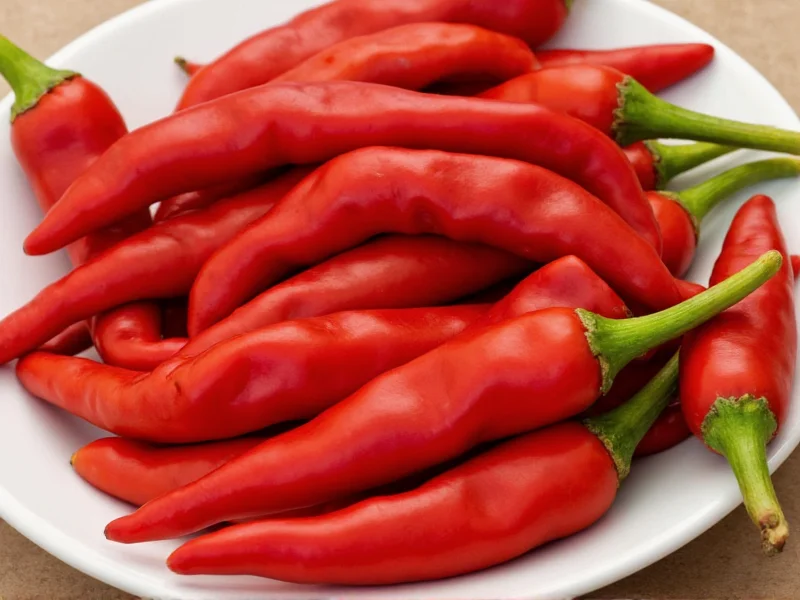Understanding chile pepper nomenclature can be confusing, especially when the same pepper goes by different names depending on its stage of maturity or preparation method. When exploring what are ancho chiles called in various contexts, the answer remains consistent across culinary professionals and Mexican cooking traditions.
Why Ancho Chiles Have Multiple Names
The term "ancho" literally means "wide" in Spanish, referring to the flattened shape of the dried pepper. Fresh poblano peppers are large, dark green, and heart-shaped. Once harvested and dried, they transform into the deep reddish-brown, wrinkled peppers known as anchos. This drying process concentrates their flavor and changes their heat profile.
Many home cooks wonder about the difference between ancho and poblano peppers. The simple explanation: they're the same variety at different stages. Poblanos are fresh; anchos are dried. This transformation affects not only appearance but also flavor complexity and culinary applications.
Characteristics of Ancho (Dried Poblano) Peppers
Ancho chiles offer a distinctive flavor profile that makes them indispensable in authentic Mexican cooking. They provide:
- Moderate heat level (1,000-2,000 Scoville units)
- Rich, slightly sweet flavor with notes of dried fruit and tobacco
- Earthy undertones that deepen when toasted
- Thick flesh that rehydrates well for sauces
| Characteristic | Fresh Poblano | Dried Ancho |
|---|---|---|
| Color | Dark green | Deep reddish-brown |
| Shape | Heart-shaped, 4-6 inches | Flattened, wide appearance |
| Heat Level | Mild (500-2,500 SHU) | Mild to medium (1,000-2,000 SHU) |
| Primary Use | Stuffed peppers, rajas | Moles, adobo sauces, stews |
Common Misconceptions About Ancho Chiles
Several naming confusions exist in the culinary world. Many people mistakenly believe:
- Ancho = Mulato: While similar, mulatos are dried mulato peppers (a different variety) with a darker color and sweeter profile
- Ancho = Pasilla: Pasillas are actually dried chilaca peppers, longer and thinner with a raisin-like flavor
- All dried chiles are the same: Different drying methods and pepper varieties create distinct flavor profiles
Understanding these distinctions helps when following recipes that specify particular chiles. When a recipe calls for ancho chiles, it specifically requires dried poblanos, not just any dried pepper.
Practical Uses for Ancho Chiles in Cooking
Chefs value ancho chiles for their versatility. The ancho chile pepper uses span numerous applications:
- Rehydrated and blended into mole sauces
- Ground into spice blends for rubs and marinades
- Steeped in liquids to infuse subtle heat and flavor
- Used whole in slow-cooked dishes for gradual flavor release
For best results, toast dried anchos lightly in a dry skillet before rehydrating. This process enhances their natural sweetness and complexity, a technique many home cooks overlook when searching for ancho chile pepper substitute options.
Finding and Storing Ancho Chiles
When shopping for these essential ingredients, look for:
- Deep, rich color (avoid faded or pale specimens)
- Flexible texture (brittle peppers indicate age)
- Intact stems and no signs of mold
Store dried anchos in an airtight container in a cool, dark place. Properly stored, they maintain quality for 6-12 months. For extended storage, keep them in the freezer where they'll retain flavor for up to two years.
Substituting Ancho Chiles
If you can't find authentic dried poblanos, understanding ancho chile pepper substitute options becomes essential. Suitable alternatives include:
- Guajillo peppers (similar heat, slightly fruitier)
- Mulato peppers (darker, sweeter profile)
- Combination of New Mexico chiles and a touch of sweet paprika
When substituting, remember that each pepper brings unique flavor notes. While you can approximate the heat level of anchos, replicating their distinctive earthy-sweet complexity requires careful selection of alternatives.
Why This Naming Matters in Authentic Cooking
The precise identification of dried poblano vs ancho matters because regional Mexican cuisine relies on specific ingredients for authentic flavor profiles. Mole poblano, one of Mexico's most famous dishes, traditionally uses both fresh poblanos and dried anchos at different preparation stages.
Professional chefs emphasize that using the correct form (fresh vs dried) affects the final dish's texture, color, and layered flavors. This attention to detail separates authentic preparations from approximations.
What is another name for ancho chiles besides dried poblano?
While "dried poblano" is the most accurate alternative name, ancho chiles are sometimes incorrectly called "pasilla" in certain regions. However, true pasilla peppers are actually dried chilaca peppers, which have a different flavor profile and appearance.
Can I substitute fresh poblano peppers for ancho chiles in recipes?
You can substitute fresh poblanos for anchos, but the flavor profile will differ significantly. Ancho chiles have a concentrated, slightly sweet, and earthy flavor from the drying process that fresh poblanos lack. For best results, use 2-3 fresh poblanos to replace 1 ancho chile, and consider adding a small amount of dried fruit for sweetness.
How hot are ancho chiles compared to other common peppers?
Ancho chiles rate between 1,000-2,000 Scoville Heat Units, placing them in the mild to medium range. They're significantly milder than jalapeños (2,500-8,000 SHU) but slightly hotter than banana peppers (0-500 SHU). Their heat is balanced by pronounced sweetness and earthiness, making them approachable for most palates.
Where can I find authentic ancho chiles?
Authentic ancho chiles (dried poblanos) are available at Mexican grocery stores, specialty food markets, and increasingly in the international section of major supermarkets. Look for them in the dried chile section, not with fresh produce. Online retailers specializing in Mexican ingredients also offer high-quality options with proper storage.
How do I properly rehydrate ancho chiles for cooking?
To rehydrate ancho chiles properly: First remove stems and seeds. Briefly toast them in a dry skillet for 15-20 seconds per side until fragrant. Place in a bowl and cover with hot (not boiling) water. Weight them down with a small plate to keep submerged. Let soak for 15-20 minutes until pliable. Drain, reserving the soaking liquid for sauces.











 浙公网安备
33010002000092号
浙公网安备
33010002000092号 浙B2-20120091-4
浙B2-20120091-4